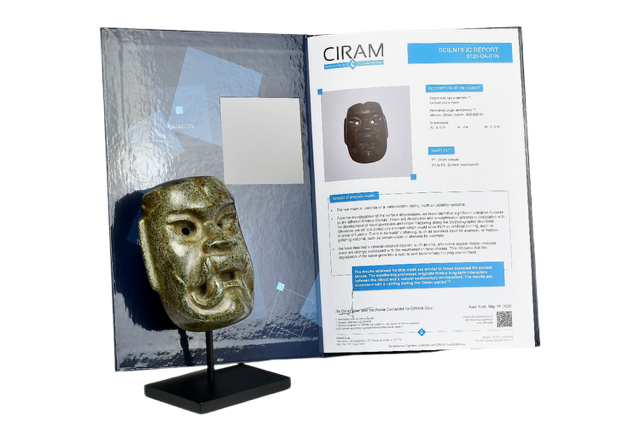The market for authentic pre-Columbian art has witnessed a significant surge in recent years, attracting a growing number of collectors and investors. These ancient artifacts, including sculptures, pottery, and textiles from cultures such as the Olmec, Maya, Aztecs, and Inca, are valued for their historical significance and potential as alternative investment assets. New investors explore this niche market as demand rises, eager to diversify their portfolios with tangible, culturally rich assets. However, navigating the complexities of this market requires a thorough understanding of authenticity, provenance, and legal considerations.
1. Understanding the Market Trends
The increasing demand for pre-Columbian art can be attributed to several factors, including a heightened interest in cultural preservation and a growing recognition of ancient art as a valuable investment. Auction houses and galleries have reported record-breaking sales of pre-Columbian pieces, signaling a robust market where quality artifacts command higher prices. Additionally, the global trend toward investing in alternative assets—such as fine art, rare collectibles, and antiquities—has further driven interest in ancient art, offering a hedge against traditional market volatility.
2. The Importance of Provenance and Authenticity
Understanding the significance of provenance—the documented history of an artifact’s ownership—is crucial for new investors. Provenance enhances an artifact’s value and ensures its legitimacy and legal status. Given the history of looting and illicit trade in antiquities, collectors must exercise caution and seek artifacts with well-documented histories. Additionally, reputable experts’ or institutions’ authentication can further ensure an artifact’s legitimacy.
Fake or misattributed pieces are a challenge in this market, and investing in authentic artifacts requires diligence. Partnering with reputable dealers and galleries specializing in pre-Columbian art, such as Galeria ConTici, can help investors avoid common pitfalls and purchase genuine pieces.
3. Navigating Legal and Ethical Considerations
Investing in pre-Columbian art also involves navigating legal and ethical considerations. Many countries have strict laws regarding exporting and selling cultural property to protect their heritage. Therefore, investors must know the legal frameworks governing the artifacts’ origin. The 1970 UNESCO Convention, for instance, established guidelines to combat the illicit trade in cultural objects, emphasizing the need for transparency in the sale and transfer of ancient artifacts.
Ethical considerations also play a role. New investors should be mindful of the cultural significance of these artifacts and avoid acquiring pieces with questionable origins. Supporting responsible and ethical practices in the acquisition and sale of pre-Columbian art safeguards cultural heritage and contributes to the long-term sustainability of the market.
4. The Investment Potential: Diversifying with Tangible Assets
Pre-Columbian artifacts offer a unique opportunity for investors looking to diversify their portfolios with tangible assets. Unlike stocks or bonds, these ancient art pieces carry intrinsic value due to their historical and cultural significance. High-quality artifacts with strong provenance tend to appreciate significantly over time as the number of available authentic pieces diminishes. This scarcity and growing global interest in ancient art positions pre-Columbian artifacts as potentially lucrative investments.
However, new investors must approach this market with a long-term perspective. The value of pre-Columbian art can fluctuate based on trends in the art world, the availability of pieces, and changes in regulations. Those who invest in well-preserved and documented artifacts can benefit from financial returns and the satisfaction of preserving cultural history.
5. Practical Tips for New Investors
To successfully enter the pre-Columbian art market, new investors should consider the following tips:
• Research Extensively: Familiarize yourself with different pre-Columbian cultures, artifact types, and the legal frameworks governing the trade of cultural property.
• Verify Provenance and Authenticity: Work with reputable dealers, galleries, or auction houses to ensure the artifact’s history and authenticity are well-documented. Consider specialists like Galeria ConTici, which has a longstanding reputation in the field.
• Start Small and Build Knowledge: Before making significant investments, begin with smaller acquisitions to gain experience and understanding.
• Seek Expert Opinions: Consult with experts in pre-Columbian art who can provide insights on the quality and legitimacy of a potential purchase.
• Consider Storage and Care: Proper storage and conservation are essential to maintain an artifact’s condition and value over time.
Conclusion
As the demand for authentic pre-Columbian art grows, new investors can explore a market that combines cultural enrichment with financial potential. By understanding market trends, emphasizing provenance, and navigating legal and ethical considerations, investors can make informed decisions and diversify their portfolios with historically significant assets. Reputable galleries like Galeria ConTici are vital in guiding new collectors through this fascinating and rewarding market. Investing in pre-Columbian art can be rewarding and meaningful with the right approach.




